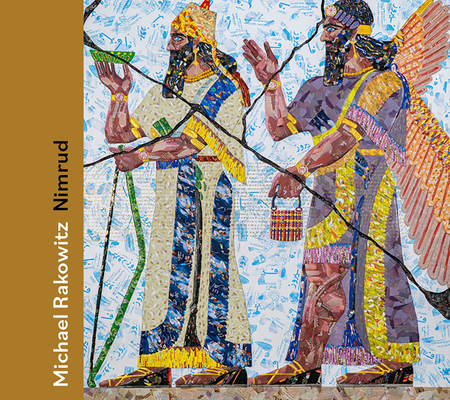Michael Rakowitz: Nimrud

Michael Rakowitz: Nimrud
On a sculptural recreation of a room from an ancient Iraqi palace, in the wake of lootings by Western archaeologists and ISIS
Using Arab-language newspapers and wrappers from food products imported from the Middle East, Iraqi American artist Michael Rakowitz (born 1973) has recreated to scale Room H from the Northwest Palace of the ancient Assyrian city of Nimrud (Kalhu). Part of a reception suite, Room H was originally lined with seven-foot-tall carved stone reliefs, including an inscription detailing Ashurnasirpal II's achievements and winged male figures, many of which have been removed by Western archaeologists over the last 150 years. Here, Rakowitz has "reappeared" only those panels that were in situ in Room H when the remains of the palace were destroyed by the jihadist group the Islamic State (ISIS) in 2015. Areas from which the reliefs had already been removed by 19th-century archaeologists are left blank, resulting in what Rakowitz calls "a palimpsest of different moments of removal."
Descrierea produsului
On a sculptural recreation of a room from an ancient Iraqi palace, in the wake of lootings by Western archaeologists and ISIS
Using Arab-language newspapers and wrappers from food products imported from the Middle East, Iraqi American artist Michael Rakowitz (born 1973) has recreated to scale Room H from the Northwest Palace of the ancient Assyrian city of Nimrud (Kalhu). Part of a reception suite, Room H was originally lined with seven-foot-tall carved stone reliefs, including an inscription detailing Ashurnasirpal II's achievements and winged male figures, many of which have been removed by Western archaeologists over the last 150 years. Here, Rakowitz has "reappeared" only those panels that were in situ in Room H when the remains of the palace were destroyed by the jihadist group the Islamic State (ISIS) in 2015. Areas from which the reliefs had already been removed by 19th-century archaeologists are left blank, resulting in what Rakowitz calls "a palimpsest of different moments of removal."
Detaliile produsului










